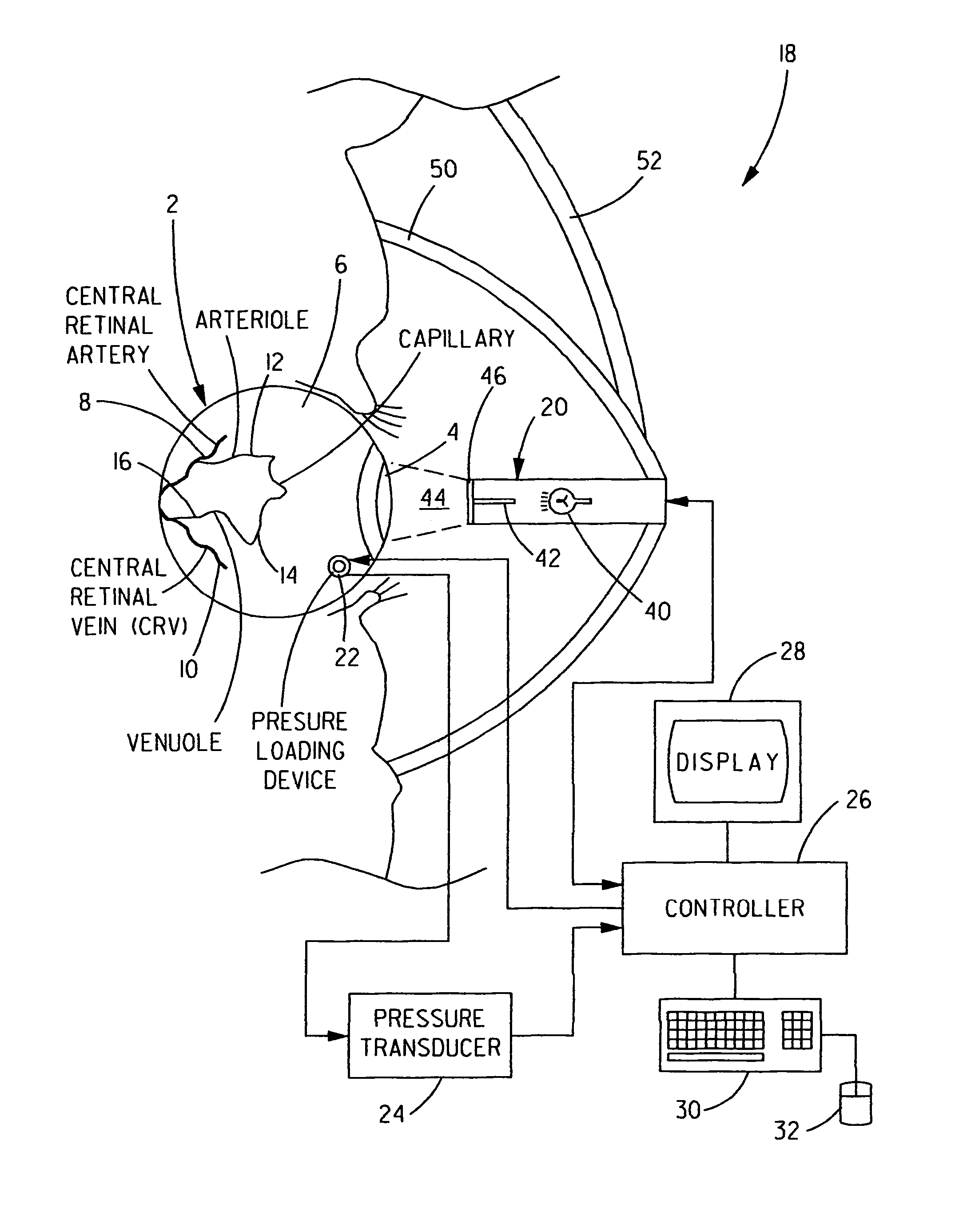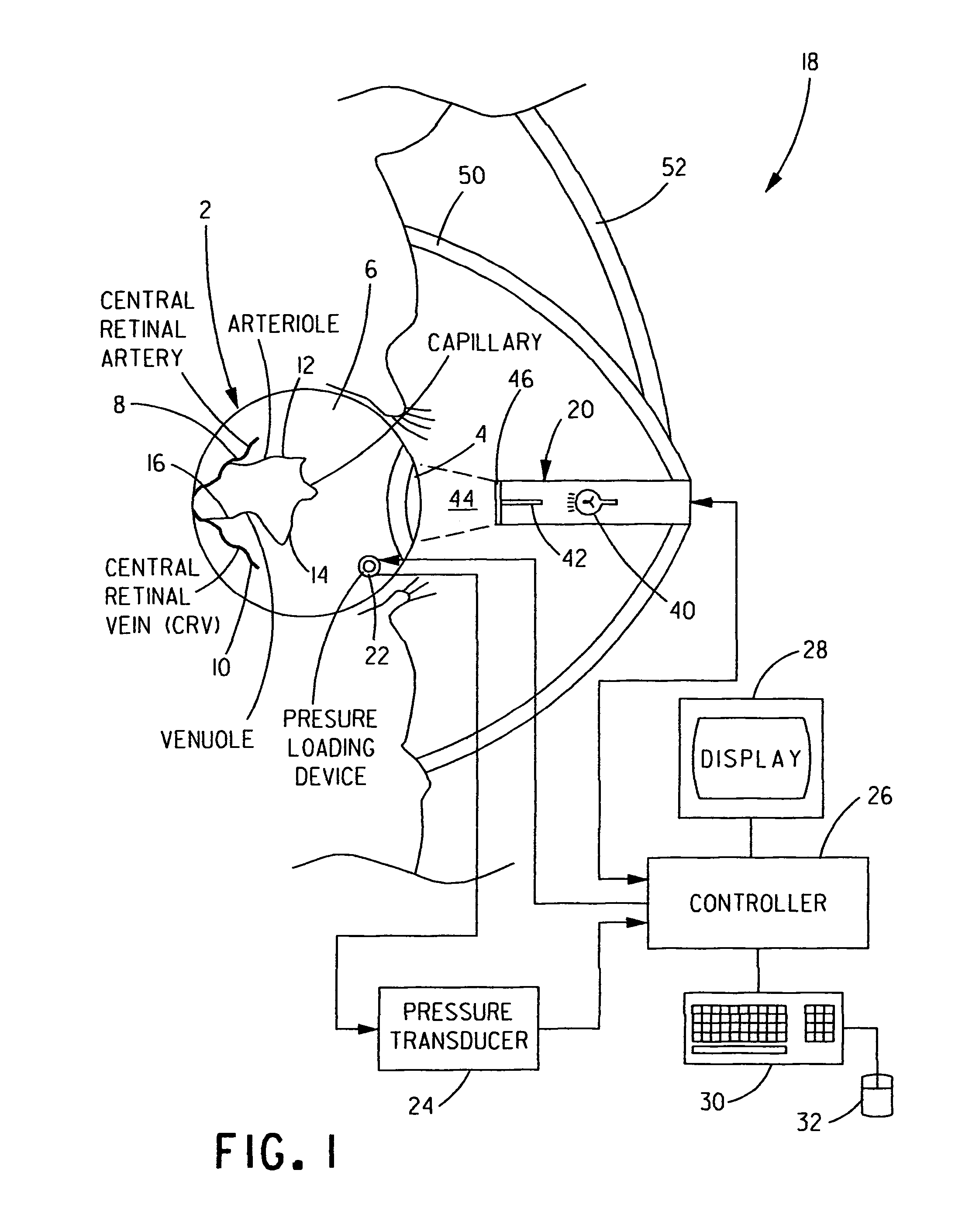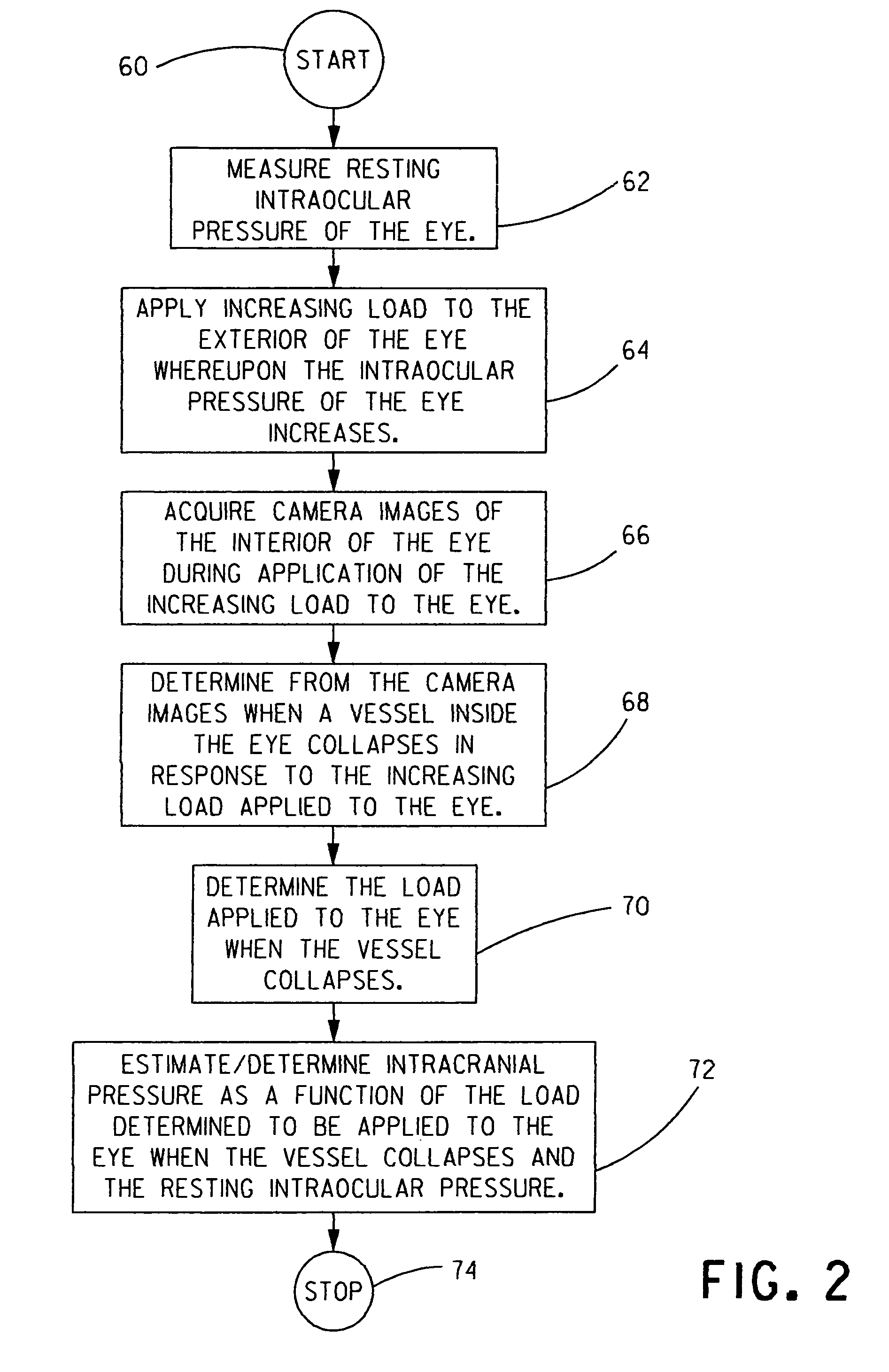Apparatus and method for non-invasive measurement of intracranial pressure
a non-invasive and intracranial pressure technology, applied in the field of intracranial pressure determination in patients, can solve the problems of inability to adapt to medical practice, limited method, and inability to measure intracranial pressure, and achieve the effect of reducing the amount of blood in the vessel
- Summary
- Abstract
- Description
- Claims
- Application Information
AI Technical Summary
Benefits of technology
Problems solved by technology
Method used
Image
Examples
Embodiment Construction
[0043] The present invention will be described with reference to the accompanying figures.
[0044] Within a human eye, the optic nerve travels through the cerebral spinal fluid (CSF) space before entering the interior of the eye. There are two major vessels that run in the optic nerve sheath, namely, a high-pressure central retinal artery and a low-pressure central retinal vein. Other vessels, such as arterioles, capillaries and venuoles, are tributaries of the central retinal artery and the central retinal vein in the eye. The pressure in the central retinal vein (CRV) must be greater than the intracranial pressure (ICP) surrounding the optic nerve sheath in order for blood to flow through the optic nerve sheath. The pressure required to collapse the CRV, called the venous outflow pressure (VOP), may be used to determine ICP.
[0045] With reference to FIG. 1, a human eye 2 includes a cornea 4 and a sclera 6. An interior of eye 2 includes a central retinal artery 8, a central retinal ...
PUM
 Login to View More
Login to View More Abstract
Description
Claims
Application Information
 Login to View More
Login to View More - R&D
- Intellectual Property
- Life Sciences
- Materials
- Tech Scout
- Unparalleled Data Quality
- Higher Quality Content
- 60% Fewer Hallucinations
Browse by: Latest US Patents, China's latest patents, Technical Efficacy Thesaurus, Application Domain, Technology Topic, Popular Technical Reports.
© 2025 PatSnap. All rights reserved.Legal|Privacy policy|Modern Slavery Act Transparency Statement|Sitemap|About US| Contact US: help@patsnap.com



